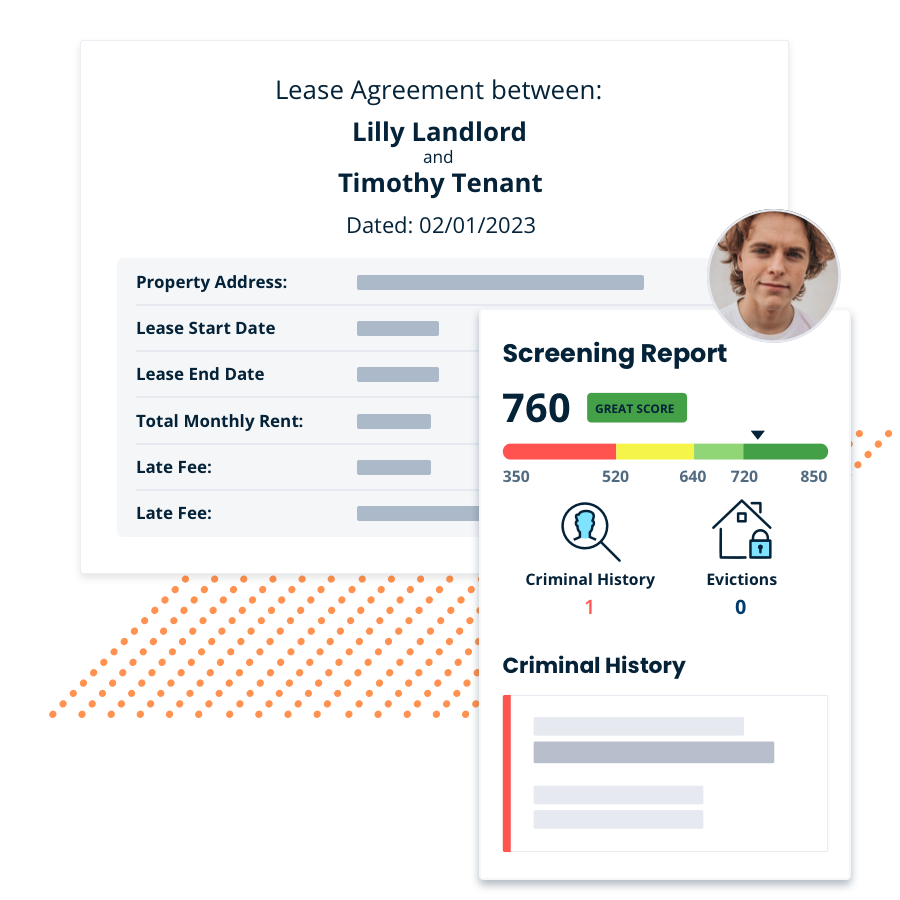Table of Contents
- Alabama
- Alaska
- Arizona
- Arkansas
- California
- Colorado
- Connecticut
- Delaware
- Florida
- Georgia
- Hawaii
- Idaho
- Illinois
- Indiana
- Iowa
- Kansas
- Kentucky
- Louisiana
- Maine
- Maryland
- Massachusetts
- Michigan
- Minnesota
- Mississippi
- Missouri
- Montana
- Nebraska
- Nevada
- New Hampshire
- New Jersey
- New Mexico
- New York
- North Carolina
- North Dakota
- Ohio
- Oklahoma
- Oregon
- Pennsylvania
- Rhode Island
- South Carolina
- South Dakota
- Tennessee
- Texas
- Utah
- Vermont
- Virginia
- Washington
- West Virginia
- Wisconsin
- Wyoming
- FAQ
Security Deposit Laws by State (2024)
Navigating the landscape of rental properties can be a complex endeavor for both landlords and tenants alike, with security deposits representing one of the most critical aspects of the leasing agreement. These financial safeguards are designed to protect landlords against potential damage to their property or unpaid rent, while also serving as a significant consideration for tenants as they plan their finances around a move. However, what is often less straightforward is the variation in security deposit laws from one state to another.
Stay informed and prepared, whether you’re drafting your next lease agreement or planning your move into a new rental home. Explore the varied landscape of security deposit laws across the U.S., ensuring that landlords and tenants alike can foster fair and lawful leasing relationships.

Alabama
- Maximum: 1 month’s rent
- Returning: 60 days after the termination date and delivery of possession
- Statute: § 35–9A-201(a), 35–9A-201(b)
Reference
Alaska
- Maximum: 2 months’ rent, except for units renting for more than $2,000
- Returning: 14 days if there are no deductions, 30 days with deductions
- Statute: § 34.03.070(a), § 34.03.070(g)
Reference
Arizona
- Maximum: 1.5 months’ rent
- Returning: 14 days not including weekends and holidays from move-out inspection (excl. weekends and holidays)
- Statute: § 33–1321
Reference
Arkansas
- Maximum: 2 months’ rent
- Returning: 60 days from termination of tenancy
- Statute: § 18–16–304, § 18–16–305
Reference
California
- Maximum: 2 months’ rent (unfurnished), 3 months’ rent (furnished) until July 1, 2024. After that date, the maximum is 1 month rent for all types of rentals
- Returning: 21 days from the move-out date
- Statute: 1950.5
Reference
Colorado
- Maximum: 2 month’s rent (excluding pet deposit)
- Returning: 1 month if mentioned in the lease, 2 months if not
- Statute: C.R.S. § 38–12–102.5, § 38–12–103
Reference
Connecticut
- Maximum: 1 month’s rent if tenant is 62 years or older, 2 months’ rent if younger
- Returning: 30 days from the move-out date or 15 days from receiving the tenant’s new address
- Statute: § 47a-21
Reference
Delaware
- Maximum: 1 month’s rent for leases of one year or more. No limit on all others
- Returning: 20 days from the termination date
- Statute: Title 25 § 5514
Reference
Florida
- Maximum: No limit
- Returning: Up to 60 days if deductions, 15 days if no deductions
- Statute: § 83.49(3)(a)
Reference
Georgia
- Maximum: No limit
- Returning: 30 days from the termination date
- Statute: § 44–7–34
Reference
Hawaii
- Maximum: 1 month’s rent (excluding pet fee)
- Returning: 14 days from the termination date
- Statute: § 521–44
Reference
Idaho
- Maximum: No limit
- Returning: 30 days if stated in the lease, 21 days if not
- Statute: § 6–320, 321
Reference
Illinois
- Maximum: No limit
- Cook County, IL: 1.5 month’s rent
- Returning: 30 days if deductions, 45 days if no deductions
- Cook County, IL: 30 days
- Statute: 765 ILCS 710
Reference
Indiana
- Maximum: No limit
- Returning: 45 days from the termination date
- Statute: § 32–31–3–12
Reference
Iowa
- Maximum: 2 months’ rent
- Returning: 30 days after the tenant has vacated
- Statute: § 562A.12
Reference
Kansas
- Maximum: 1 month’s rent (unfurnished), 1.5 months’ rent (furnished) (not including pet deposit)
- Returning: 14 days after making deductions or 30 days from the termination date
- Statute: § 58–2550
Reference
Kentucky
- Maximum: No limit
- Returning: No deadline, but landlord must send written notice to tenant that a refund will be coming. If there is no response from tenant within 60 days, landlord may keep security deposit
- Statute: § 383.580(6)
Reference
Louisiana
- Maximum: No limit
- Returning: 1 month from the termination date
- Statute: Revised Statute 9:3251
Reference
Maine
- Maximum: 2 months’ rent
- Returning: 30 days if the lease is terminated, 21 days if fixed-tenancy at-will
- Statute: § 6032, § 6033
Reference
Maryland
- Maximum: 2 months’ rent
- Returning: 45 days from the termination date
- Statute: § 8–203
Reference
Massachusetts
- Maximum: 1 month’s rent
- Returning: 30 days after the tenant has vacated
- Statute: Chapter 186, Section 15B
Reference
Michigan
- Maximum: 1.5 months’ rent
- Returning: 30 days from the end of occupancy
- Statute: § 554.602, § 554.609
Reference
Minnesota
- Maximum: No limit
- Returning: 3 weeks from the termination date
- Statute: § 504B.178
Reference
Mississippi
- Maximum: No limit
- Returning: 45 days from the end of tenancy
- Statute: § 89–8–21
Reference
Missouri
- Maximum: 2 months’ rent
- Returning: 30 days from the termination of tenancy
- Statute: § 535.300
Reference
Montana
- Maximum: No limit
- Returning: 10 days if no deductions, 30 days if deductions
- Statute: § 70–25–202
Reference
Nebraska
- Maximum: 1 month’s rent (excluding pet fee)
- Returning: 14 days if no deductions, 14 days of move-out inspection
- Statute: § 76–1416
Reference
Nevada
- Maximum: 3 months’ rent
- Returning: 30 days from the end of tenancy
- Statute: NRS 118A.242
Reference
New Hampshire
- Maximum: 1 month’s rent or $100, whichever is greater
- Returning: 30 days, 20 days if the property is shared with the landlord
- Statute: RSA 540-A:6, RSA 540-A:7
Reference
New Jersey
- Maximum: 1.5 months’ rent
- Returning: 30 days from the termination date
- Statute: § 46:8–21.2, § 46:8–21.1
Reference
New Mexico
- Maximum: 1 month’s rent for leases under one year. No limit for residential leases one year or more
- Returning: 30 days from the termination date
- Statute: § 47–8–18
Reference
New York
- Maximum: 1 month’s rent unless the deposit is for a seasonal use dwelling unit
- Returning: 14 days after the tenant has vacated
- Statute: Emergency Tenant Protection Act 576/74(f), § 7–108 (e)
Reference
North Carolina
- Maximum: 2 months’ rent for tenancies of more than 2 months; 1.5 months’ rent for month-to-month tenancies
- Returning: 30 days along with itemized deductions if any. Landlord may have up to 60 days to determine deductions and return security deposit.
- Statute: § 42–51, § 42–52
Reference
North Dakota
- Maximum: 1 month’s rent (excluding pet deposit)
- Returning: 30 days from the termination date
- Statute: § 47–16–07.1
Reference
Ohio
- Maximum: No limit
- Returning: 30 days from the termination date
- Statute: § 5321.16
Reference
Oklahoma
- Maximum: No limit
- Returning: 45 days from the termination date
- Statute: § 41–115(B)
Reference
Oregon
- Maximum: No limit
- Returning: 31 days from the termination date
- Statute: § 90.300
Reference
Pennsylvania
- Maximum: 2 months’ rent
- Returning: 30 days from the termination date
- Statute: § 250.511a, § 250.512
Reference
Rhode Island
- Maximum: 1 month’s rent
- Returning: 20 days from the termination date
- Statute: § 34–18–19
Reference
South Carolina
- Maximum: No limit
- Returning: 30 days from the termination date
- Statute: § 27–40–410
Reference
Certainly! Here are the revisions for South Dakota through Wyoming with the added links:
South Dakota
- Maximum: 1 month’s rent
- Returning: 14 days and then if lessee requests an itemization of all lawful deductions, landlord has 45 days to send that written notice
- Statute: § 43.32-6.1 and 43-32-24
Reference
Tennessee
- Maximum: No limit
- Returning: 30 days from the termination date
- Statute: § 66–28–301
Reference
Texas
- Maximum: No limit
- Returning: 30 days after the tenant has vacated
- Statute: § 92.103
Reference
Utah
- Maximum: No limit
- Returning: 30 days from the termination date
- Statute: § 57–17–3
Reference
Vermont
- Maximum: 1 mo rent
- Returning: 14 days, 60 days if a seasonal property
- Statute: § 4461
Reference
Virginia
- Maximum: 2 months’ rent
- Returning: 45 days from the termination date or the date the tenant vacates the dwelling unit, whichever occurs last
- Statute: § 55.1–1226
Reference
Washington
- Maximum: No limit
- Returning: 21 days from the tenant’s move-out date
- Statute: § 59.18.280
Seattle
- Maximum: 1 month rent
- Return: 21 days
Tacoma
- Maximum: 1 mo rent
- Return: 21 days
Reference
West Virginia
- Maximum: No limit
- Returning: 60 days after tenancy ends or 45 days after another tenant moves in, whichever shorter
- Statute: § 37–6A-2
Reference
Wisconsin
- Maximum: No limit
- Returning: 21 days from tenant’s vacancy date
- Statute: § 134.06
Reference
Wyoming
- Maximum: No limit
- Returning: 30 days from lease termination or 15 days from receiving the tenant’s forwarding address, whichever is later
- Statute: § 1–21–1208(A)
Reference
FAQ
How Much is a Security Deposit Usually?
The amount of a security deposit can vary widely depending on the state and the rental property itself. Generally, landlords may charge up to one to two months’ rent for a security deposit. However, some states have no limit on the amount a landlord can charge, while others specify maximum amounts. For example, in Alaska, the maximum security deposit is two months’ rent, except for units renting for more than $2,000 a month, which have no limit. It’s important to check the specific laws in your state for the most accurate information.
Does Section 8 Pay Security Deposit?
Section 8, a federal housing assistance program, does not directly pay for security deposits. The responsibility for the security deposit falls on the tenant. However, some local housing authorities or non-profit organizations may have programs or funds available to help Section 8 voucher holders with their security deposits. It’s advisable for Section 8 tenants to inquire with their local housing authority or a housing counselor for assistance or resources related to security deposits.
When is Security Deposit Due?
The security deposit is typically due at the time of lease signing or before the tenant moves into the rental unit. This timing can vary by landlord or management company, but it is common practice to collect the security deposit along with the first month’s rent before giving the tenant keys to the property. The specific requirements and timing should be outlined in the lease agreement.
Does Security Deposit Increase with Rent Increase?
Security deposits can increase with a rent increase, but this is subject to state laws and the terms of the lease agreement. Some states allow landlords to request additional security deposit funds to match rent increases, typically at the time of lease renewal. However, there may be limits to how much and how often a landlord can increase a security deposit. Tenants and landlords should refer to their state’s laws and their lease agreement for guidance.
Can Landlord Sue for Damages Beyond Security Deposit?
Yes, a landlord can sue a tenant for damages that exceed the amount of the security deposit. If the cost of repairs for damage to the property, unpaid rent, or other lease violations surpasses the security deposit, the landlord may pursue legal action to recover the additional funds. The landlord would need to provide evidence of the damages and their costs as part of the lawsuit. It’s important for both tenants and landlords to document the condition of the rental unit at move-in and move-out to support any claims related to damages.

